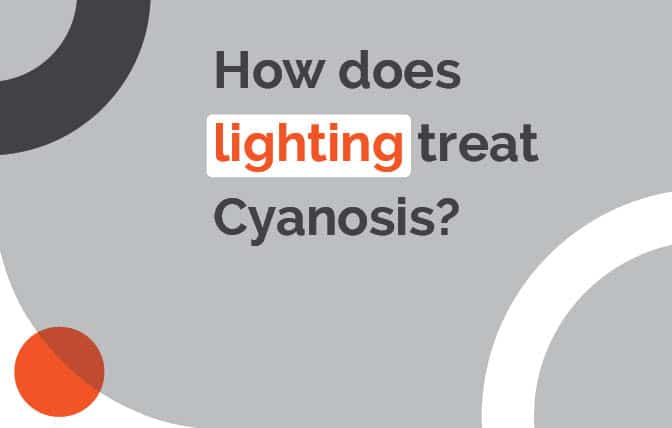Latest News
How does Lighting treat Cyanosis?

What is Cyanosis?
Cyanosis is a medical condition characterised by a bluish tint to the skin and mucous membranes, caused by a lack of oxygen in the blood. This can be caused by a variety of factors, including heart and lung disease, as well as exposure to certain chemicals and toxins.
One of the key factors in the diagnosis and treatment of cyanosis is proper lighting. To accurately assess the skin colour of a patient with suspected cyanosis, it is important to have bright, consistent lighting that is able to accurately represent the true colour of the skin.
One of the most used types of lighting for this purpose is natural daylight, as it provides a neutral and consistent light source that can help to accurately assess skin colour. However, in cases where natural daylight is not available, other types of lighting can be used, such as halogen or LED lights.
It is also important to consider the surrounding environment when assessing a patient with suspected cyanosis. For example, lighting that is too bright or too dim can make it difficult to accurately assess the skin colour, and the use of certain types of clothing or bedding can also have an impact on the appearance of the skin.
How does lighting treat Cyanosis?
In addition to being used for diagnostic purposes, light therapy can also be used to help prevent and treat cyanosis. Light therapy is a medical treatment that involves exposing the skin to specific wavelengths of light to treat various medical conditions. The wavelengths of light used in light therapy are typically blue or green spectrum, which is effective in treating cyanosis. For example, providing patients with exposure to bright light can help to stimulate the production of oxygen in the blood, while avoiding exposure to certain chemicals or toxins can help to prevent the development of cyanosis in the first place.
Light therapy is typically administered through special light-emitting diode (LED) lights, which emit a narrow band of light in the blue or green spectrum. The lights are placed close to the skin and are usually left on for several minutes, several times a day, depending on the severity of the condition.
Overall, proper lighting is an essential component of the diagnosis and treatment of cyanosis. By providing bright, consistent light sources and considering the surrounding environment, healthcare professionals can more accurately assess and treat patients with this condition.
In addition to treating cyanosis, light therapy is also used to treat a wide range of other medical conditions, including depression, psoriasis and acne. It is a safe and effective treatment that does not cause any harmful side effects, making it an ideal treatment for many patients.

Working on a medical setting design, renovation or construction project?
We offer contractors and businesses across Australia energy-efficient, cost-effective, and timely lighting solutions for their projects. Get in touch with us to learn more about our lighting products for your next project.
We're a Casambi certified commissioning partner